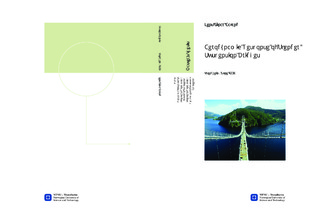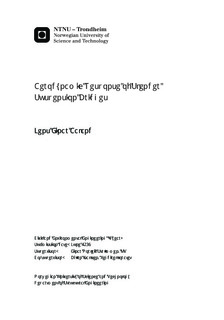| dc.description.abstract | During the planning of long, slender suspension bridges a lot of aerodynamics has to be taken into account. This thesis focus on one phenomenon; vortex induced vibrations. The purpose of the work has been to learn theory about how the response is obtained and how tuned mass dampers can suppress movement of the bridge girder. The focus has been on the vertical modes,knowing that vortex induced vibrations could happen for torsional and sometimes for horizontal modes as well.By learning theory, and making small Matlab script a final Matlab script is developed to use in a multi mode, multi component case. The Matlab script is tested on data from the Hardanger bridge.The analysis of the Hardanger bridge indicate in the order of 0.1 meters maximum displacement response without the use of tuned mass dampers. The analysis indicate that one or several tuned mass dampers placed at locations where the eigen-mode they are supposed to damp out has its maximum, or is close to its maximum, is an efficient way to reduce the response. A damper is more effective when it has higher mass ratio, but the ratio of the increasing effect seems to decay for higher mass ratios. The value of the damping seems to adjust the difference between the value of the frequency response function at the eigen-frequency, and the peaks around. A higher damping ratio seems to give a smoother curve for the values consider in this case. The value of the frequency seems to adjust the relative height between the two peaks at each side of the eigen-frequency in the frequency response function. Den Hartogs optimization gives peaks at almost the same level. Frequency according to Den Hartog, and dampingaccording to Den Hartog or slightly above seems to give good effect of the tuned mass dampers. In the Matlab script, the iteration process to find the response, is done for the case with no damper, but the response term in the aerodynamic damping is neglected for the case of tuned mass dampers installed. That is because the response, if the damper is effective is negligible used in the expression for aerodynamic damping. This would be my recommendation to further work, to investigate the consequences of neglecting this term. | nb_NO |

